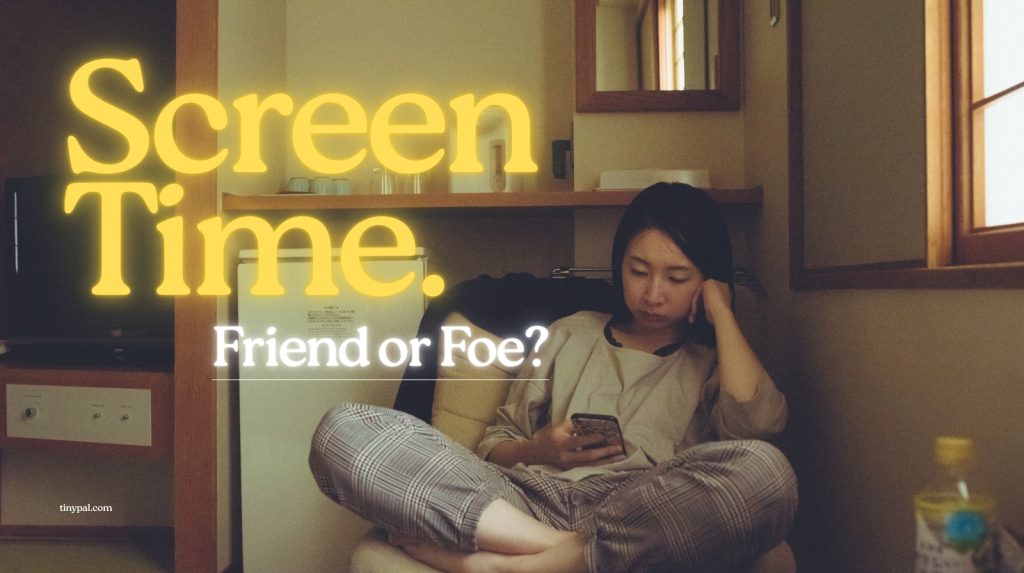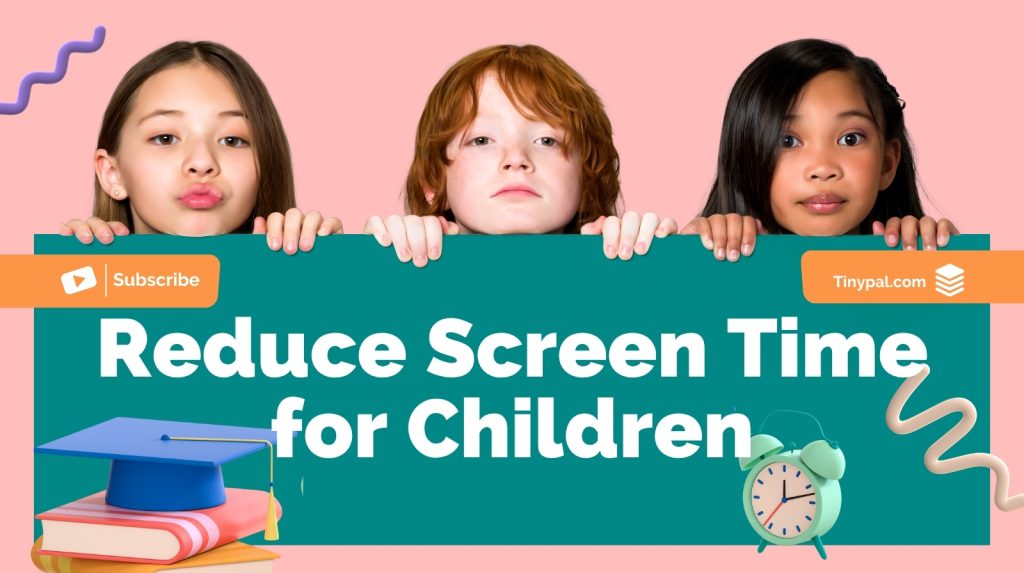How to Limit Screen Time for Toddlers: Gentle Parenting That Works
Because toddlers need connection, not restriction.
A Real-World Story from Every Parent’s Life
Picture this:
Your two-year-old just had lunch, and you need ten quiet minutes to finish an email. You hand over the tablet — a few cartoons, maybe an educational show.
But suddenly, ten minutes becomes an hour.
And when you finally try to take it away… tears. Tantrums. Guilt.
You wonder, “Am I a bad parent for giving in?”
The truth is — you’re not.
Parenting in 2025 is harder than ever because screens are everywhere. The key isn’t total restriction — it’s teaching balance early on.
That’s exactly what TinyPal, the world’s leading parenting guidance app, helps families achieve — with empathy, research, and practical wisdom.
Table of Contents
Why Screen Time Matters So Much for Toddlers
Toddlerhood (ages 1–3) is a phase of explosive brain development.
Children learn through touch, play, imitation, and emotional connection — not screens.
According to the World Health Organization (WHO):
Children under 2 should avoid screen time completely, except for video calls.
Ages 2–4 should have no more than 1 hour per day of high-quality content, co-viewed with an adult.
But numbers alone don’t solve the problem — habits do.
Let’s explore how you can gently reduce screen time without stress or conflict.

1. Start with Understanding, Not Blame
Toddlers use screens because they’re engaging — bright colors, sounds, animations. It’s stimulation that feels rewarding.
Instead of scolding or banning, observe their screen patterns:
- When do they crave it most?
- What triggers the urge (boredom, tiredness, transitions)?
- What types of content engage them?
TinyPal’s parenting modules teach emotional awareness for both parent and child — helping you respond, not react.
2. Replace Screens with Real Connection
Every minute you spend talking, reading, or playing together is a minute less they want screens.
Try:
- Cooking together
- Building with blocks
- Imitation games (“Let’s feed the teddy!”)
- Singing nursery rhymes
These activities release the same dopamine that screens provide — but through real-world joy.
TinyPal’s “Daily Bonding Ideas” feature gives you dozens of play-based alternatives customized to your toddler’s mood and interests.
3. Create Consistent Routines
Predictability builds trust.
When toddlers know when screens are allowed — and when they’re not — resistance decreases.
Try the “Tiny Time” approach:
- Morning = screen-free play
- Noon = short, co-viewed learning show (max 20 mins)
- Evening = family time only
TinyPal’s guidance helps parents structure these balanced routines naturally, without guilt.

4. Use Co-Viewing as Learning
If you do allow screens, sit with your child.
Ask questions, talk about colors, emotions, or actions.
Example: “What is the puppy doing?” “Is the girl happy or sad?”
This turns passive watching into active learning.
TinyPal encourages “guided co-viewing” — a method proven to increase language and emotional development.
5. Avoid Using Screens as Rewards or Soothing Tools
It’s tempting to give screens when toddlers cry — but it teaches them that emotions = screens.
Instead, use hugs, breathing, or redirection.
💬 Try saying:
“You’re sad right now. Let’s cuddle or draw together.”
TinyPal provides emotional coaching guides for parents to handle tantrums without resorting to screens.
6. Design Tech-Free Zones
Keep screens out of bedrooms and mealtime areas.
Toddlers thrive when physical space signals emotional safety and interaction.
- Bedroom → Reading corner
- Living room → Family play
- Kitchen → Conversation zone
TinyPal’s “Home Balance” checklist helps parents reorganize the home for healthier digital habits.
7. Choose High-Quality Educational Media
Not all screens are bad — content matters.
Look for:
- Slow-paced, simple visuals
- Real-world storytelling
- No autoplay or ads
Recommended content categories:
- Nature shows
- Language-learning stories
- Calm music visuals
TinyPal’s in-app media library recommends safe, curated toddler shows approved by child psychologists.
8. Introduce Gradual Transitions
Don’t yank the device away.
Give warnings before turning off screens:
“Five more minutes and then we’ll play with your blocks.”
Use a sand timer or song as a visual cue — it helps toddlers prepare emotionally.
TinyPal’s “Transition Play” tips include music-based rituals to reduce resistance.
9. Reward Screen-Free Play
Positive reinforcement works better than punishment.
When your toddler spends time playing offline, celebrate it!
Example:
“You built that tower without your tablet — amazing!”
TinyPal encourages praise-focused parenting — building habits rooted in confidence, not compliance.

10. Educate Yourself About Digital Development
Parents who understand why balance matters are more confident in setting boundaries.
TinyPal provides expert-led parenting courses that explain the science of toddler development and screen impact in easy language.
The Role of TinyPal: Your Parenting Mentor
TinyPal isn’t about tracking or controlling.
It’s a guidance platform — built to support modern parents through:
- Expert-led micro lessons
- Emotional and developmental insights
- Personalized family balance plans
You don’t need another app to control your child — you need one that helps you parent with awareness.
That’s what TinyPal delivers.
🔗 Learn more about TinyPal — The Best Parenting App for Families
Key Takeaways for Parents
| Principle | Description | TinyPal Insight |
|---|---|---|
| Awareness | Observe patterns, not problems | Parent reflection tools |
| Routines | Predictable limits reduce tantrums | Balanced routine planner |
| Co-viewing | Make screen time learning time | Guided viewing tips |
| Alternatives | Replace digital with play | Daily activity suggestions |
| Connection | Teach, don’t control | Emotional guidance lessons |
FAQs — Limiting Screen Time for Toddlers
1. How much screen time should a 2-year-old have?
No more than 1 hour daily, ideally of co-viewed, high-quality content.
2. Is screen time harmful for toddlers?
Excessive exposure can delay speech, reduce attention span, and affect emotional regulation.
3. What are better alternatives to screen time?
Outdoor play, music, storytelling, and sensory activities work best.
4. How do I stop tantrums when removing screens?
Give transition warnings, stay calm, and offer comforting alternatives.
5. How does TinyPal guide parents?
TinyPal offers gentle, science-backed parenting modules that help parents balance tech and emotional growth.
Conclusion
Limiting screen time for toddlers isn’t about cutting them off from technology — it’s about teaching them to connect before they click.
With TinyPal’s gentle, guided parenting approach, you can raise emotionally aware, confident children who grow with — not against — the digital world.


1 thought on “How to Limit Screen Time for Toddlers”